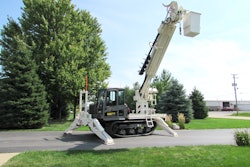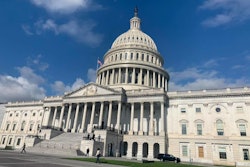
The gas tax hike took effect July 1 as part of "Rebuild Illinois," a $45 billion capital plan designed to fix infrastructure, update state facilities, fund education programs and create jobs. As a result, drivers in Illinois paid $100 million more in gas taxes in July than they did during the same month in 2018.
Motorists in Illinois started paying 38 cents a gallon in state gas taxes on July 1 2019 as lawmakers doubled the state's gas tax this spring as part of a plan to pay for infrastructure projects across the state. The revenue is earmarked for public works projects included in a six-year, $45 billion infrastructure plan. Lawmakers also passed other tax and fee increases along with expanded gambling measures as part of the spending plan for roads, bridges and buildings.
The new gas tax revenue has yet to be spent. An official with the Illinois Department of Transportation said it was unclear if work has started on any of the projects in the state's new capital program.
"Rebuild Illinois is the largest, most comprehensive capital program in state history, touching every part of Illinois and all modes of transportation, including our roads, bridges, transit systems, bicycle and pedestrian accommodations, airports and waterways," IDOT spokesman Guy Tridgell said. "The Illinois Department of Transportation is in the process of finalizing a multiyear program that will detail a transparent timeline for these investments that will improve safety, enhance quality of life and create jobs in our communities."
Gas Tax Increase Good for Economy
Over two years into the Trump administration, no credible proposal for investing in roads, bridges, transportation, better Internet access, or the other pressing needs of our infrastructure has been made, and the economy needs a jolt to keep growing. One way to do this is increase the gas tax at the national level which has not been touched since 1993. President Trump and Democrats should put aside differences to boost infrastructure investment and modernize cities and rural technology.
Federal and state governments spend about $450 billion a year or roads, bridges, mass transit, waterways and the like. That should be increased by at least $200 billion to catch decaying and crowded facilities and to address climate change and 5G.
“There is no better time to adjust this fee to update our infrastructure,” Ed Mortimer, vice president of transportation infrastructure for the U.S. Chamber of Commerce says. “We’re proposing a total increase of 25 cents. That’s a penny increase a year for the 25 years we haven’t raised the Federal gas tax.”
Mortimer says raising the gas tax is a Federal Government responsibility and the average taxpayer will only need to invest $9 per month in order to accommodate this increase. That compared to the average of $500 in vehicle damage per year the average American pays due to our crumbling roadways seems like a small price to pay.
“American people are starting to recognize the problem,” Mortimer says. “Infrastructure is an asset we can all benefit from in the long-term and we can’t give up. The longer we wait, the more it will cost taxpayers to fix what’s been neglected.”




















